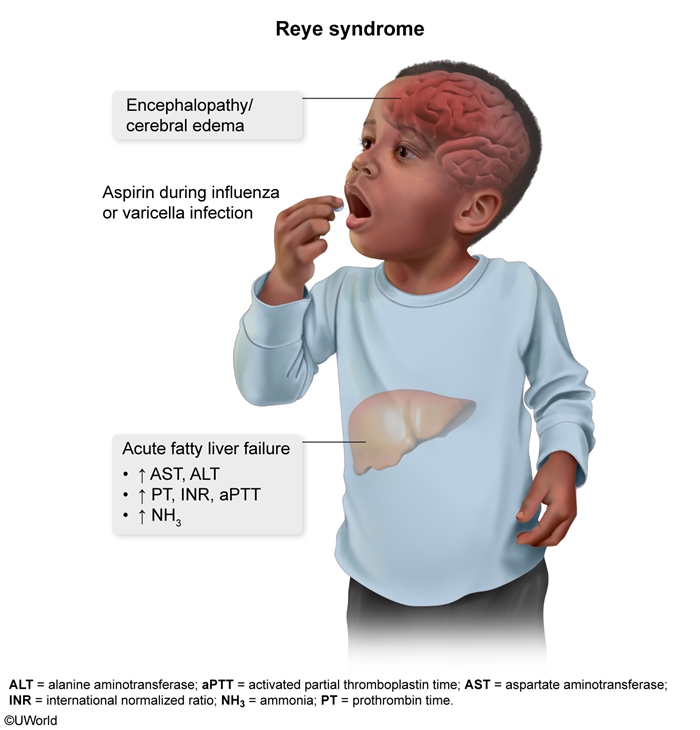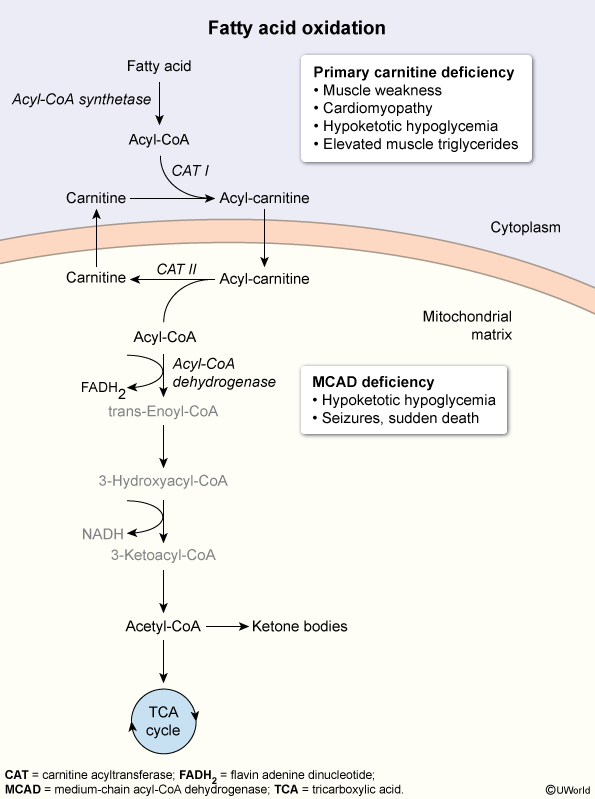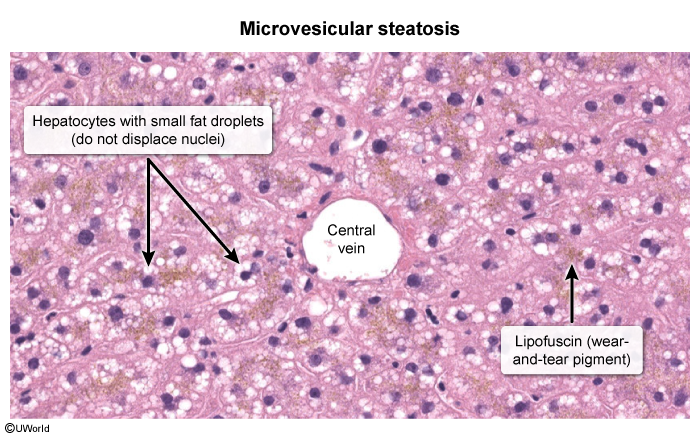Reye Syndrome
Article Sections
Introduction
Reye syndrome is a rare but potentially fatal toxic-metabolic condition characterized by acute and rapidly progressive liver failure and encephalopathy. It most commonly occurs in children who are given salicylates during a viral infection.
Pathogenesis
In susceptible patients, salicylates can cause mitochondrial dysfunction within hepatocytes through inhibition of enzymes involved in fatty acid beta-oxidation. Impaired mitochondrial fatty acid oxidation leads to fat deposition in hepatocytes (ie, hepatic steatosis), hepatomegaly, and acute liver failure. This prevents the liver from meeting metabolic demands, which often increase in the setting of a viral infection.
Rapidly progressive hepatic dysfunction (eg, reduced urea cycle activity) leads to excess ammonia accumulation, causing diffuse astrocyte swelling (cerebral edema) with increased intracranial pressure (ICP) and encephalopathy (eg, vomiting, confusion, lethargy).
Continue Learning with UWorld
Get the full Reye Syndrome article plus rich visuals, real-world cases, and in-depth insights from medical experts, all available through the UWorld Medical Library.
Figures


Images
